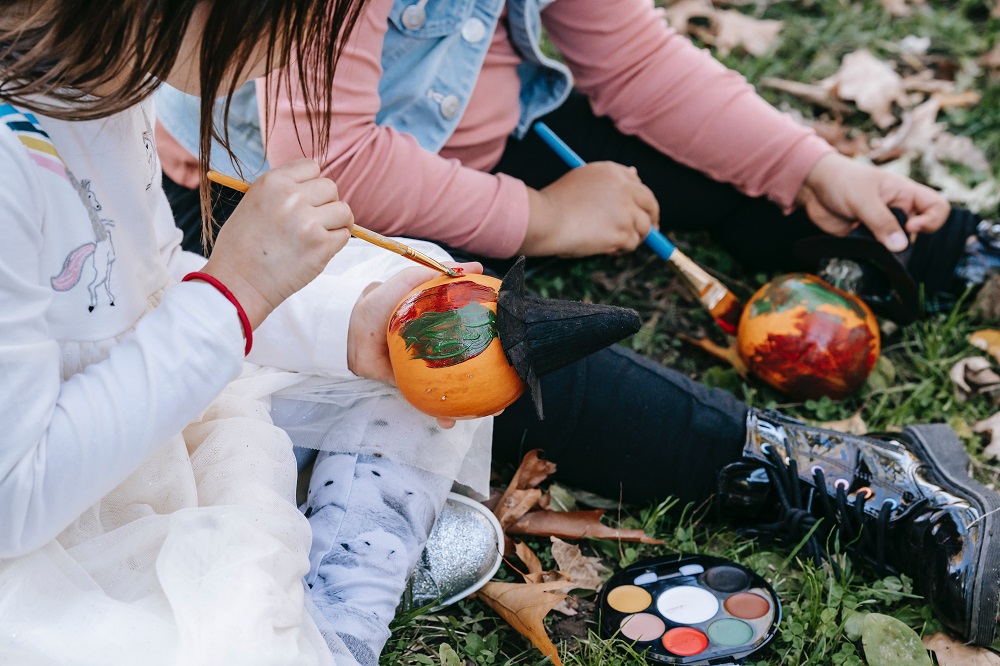
For many families, Halloween is a holiday to unwind and have fun. But for children on the autism spectrum who rely on predictability to maintain a sense of order, the deviations from normalcy that are part of Halloween celebrations can present challenges for them.
“Although it is important to remember every child is different, people with autism spectrum disorders generally tend to prefer structure and predictability, and it may be difficult to participate in activities that are not a part of their regular routine,” says Caitlin Shapiro, a clinical social worker at Silver Psychotherapy in Ijamsville, Maryland.
Many elements of Halloween can be particularly challenging for kids on the autism spectrum.
“Halloween can be scary for some kids on the spectrum due to the darkness, noise levels, masks and costumes,” says Jamila Tucker Mulero, founder of Autism R.E.C., a Philadelphia-based organization that provides education programs and resources to families with autistic children. Her 12-year-old son has autism, and the scary sounds of Halloween displays frighten him the most.
The interactions with strangers that are part of trick-or-treating may also be uncomfortable for some kids with autism. “Children may feel less comfortable interacting with neighbors and people whom they are less familiar with. Therefore, ringing a doorbell and saying ‘trick or treat’ feels like a big deal,” says Meagan Wills, a licensed clinical psychologist at the Center for Autism Spectrum Disorders at Children’s National Hospital in Washington, D.C. “Moreover, language impairments may interfere with a child’s ability to say ‘trick or treat.’”
Costumes can also present issues. “Store-bought costumes may have itchy material that makes it difficult for those who have sensory sensitivities,” Wills says.
Ways to Make Halloween a Fun and Comfortable Experience for Your Child
Matt Edelstein—a licensed psychologist and licensed behavior analyst at the Behavior Management Clinic in the Department of Behavior Psychology at Kennedy Krieger Institute in Baltimore, Maryland—recognizes that it can be hard for parents to push their kids to try new things while wanting to protect them from distressing experiences.
For parents of kids on the autism spectrum who find Halloween a challenging time, the best step parents can take is “prepare them the best that you can and have an easy escape plan.”
Edelstein recommends that parents consider the following questions before trick-or-treating begins:
- Will it be helpful to preview the trick-or-treat route with my child before it turns dark?
- Should I allow my child to wear a costume before Halloween so that he or she can get accustomed to the fit?
- Should we practice the steps of knocking on a new person’s door and waiting appropriately so that my child knows what trick-or-treating involves?
- What are the components of the celebration to avoid entirely given my child’s functioning level?
It’s also helpful to plan an easy way out of the trick-or-treating if something comes up that is too overwhelming for the child and ruins the experience. “Having a friend or a partner following along a trick-or-treat route in a car, or bringing a stroller with a tablet and earphones are both good options for a quick extraction,” Edelstein says.
Parents can also plan alternatives to trick-or-treating that might make their kids feel more comfortable while still participating in Halloween celebrations.
Identify Autism-friendly Activities and Events
“Fortunately, as much the world seeks to become more inclusive, there are more opportunities for individuals with autism to participate in Halloween festivities. Many communities have movie theaters or live events advertised as ‘sensory friendly,’” Edelstein says. “These activities tend to lighten the sensory load for children by reducing the volume of loud noises and minimizing bright, flashing lights.”
And, of course, staying home and planning small family festivities is always an option if going out for trick-or-treating or parties feels too overwhelming.
“If staying home is preferred, you can also consider a scavenger hunt in your home or backyard and hide candy for your child to find,” Shapiro says. “Individual activities such as pumpkin painting, movie night or baking festive treats may also be fun.”
Ultimately, parents know their children best and what specific elements of Halloween might present challenges, as well as what they will most enjoy.
“Every child is unique,” Shapiro says. “You can help them navigate how they will be able to participate in the holiday by exploring these ideas beforehand so they feel prepared and equipped to celebrate in whatever way they can.”




